Intermediate Tips
Balance: The Most Important Aspect of Surfing
Written by SurfScience.com Guest Writer: Scott Coleman (Sports Physio, Biomechanist)
Problem - How can we improve our balance for surfing?
The first thing we need to do is look at the cause of the problem – What makes balance such a challenge whilst surfing?
Once we’ve worked out the cause we can try to find a solution – How and what can be changed? Which variables can we manipulate?
What is balance?
Balance basically involves two main variables – the centre of mass and the base of support. The centre of mass is the term given for the middle point or centre of a body. Eg. The centre of the cube in figure 1 (red dot). This is the point at which forces (such as gravity) act on the body (blue line). The base of support is the area of contact underneath an object. Eg. The base of the cube (yellow area). If the centre of mass is over the base of support, then the object is stable or balanced. If the centre of mass is not over the base of support, and the line of force acting on the centre of mass (gravity in figures 1and 2) is landing outside the base of support, then the object will fall over. Think about when you’re standing still and you slowly lean forward. The point at which you lose balance and have to step forward is the point at which your centre of mass is no longer over your base of support (the area between your feet). The bigger the base of support, the easier it is to balance (eg standing on one leg or two legs) The closer the centre of mass is to the base of support, the easier it is to balance. (eg laying down on the board compared to standing).
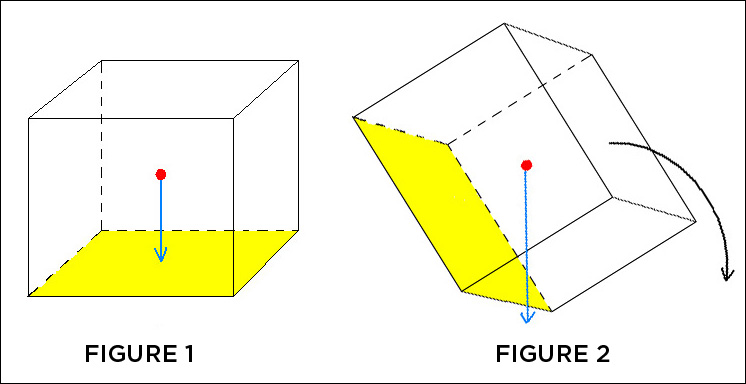
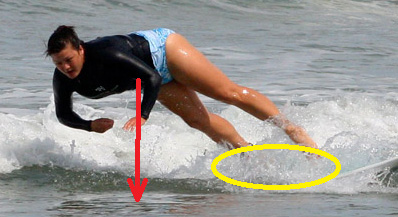
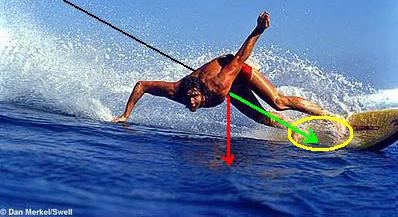
That’s pretty simple for a stationary object, but what about when we’re moving? This is where the forces acting on the centre of mass start to change a bit. As you’re traveling in a straight line, like taking off down the face, the above rules still apply. That is, the centre of mass must be over the base of support. If the centre of mass is not directly over the base of support, the surfer eats it! (figure 3).
Let’s have a look at one of MR’s awesome single fin bottom turns in figure 4. There’s no way the gravity line of force from his centre of mass (red line) is over his base of support (yellow circle). The difference between figures 3 and 4 is that MR is turning. This changes the angle of the force acting on the center of mass. As soon as you start turning the board in an arc, you create something called centripetal force.
Centripetal Force
Back to high school science - picture a ball attached to a piece of string (figure 5). As it’s hanging without moving (on the right), the line of force is heading straight down (red line - gravity). If you start swinging it around in a circle (on the left), centripetal force starts to push the ball outwards (orange line). Gravity is still pulling the ball downwards, so the result is a force that is pushing the ball at an angle (the green line). The angle of the force is same angle that the string makes. Back to figure 4, as MR is leaning into his bottom turn and the board starts turning in an arc, the new line of force (the combination of gravity and centripetal force) is in the direction of the imaginary black string attached to his center of mass, which is landing over his base of support, and therefore he doesn’t eat it. The smaller the bit of string attached to the ball, the smaller the circle the ball spins in. The smaller the circle, the faster the ball spins around and the higher the centripetal force. The higher the centripetal force, the harder it is to balance. That’s why turning in a short narrow arc is always harder than wide arcs.
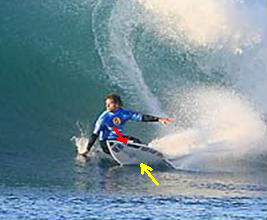
It’s time to start looking at the base of support. Generally, the bigger and more stable the base of support, the easier it is to balance. That’s why bigger boards are easier to balance. You also want a pretty hard or stiff base of support (have you ever tried standing up on an inflatable mattress in the water!). Finally, you need the surface of the base of support to be as close as possible to perpendicular to the line of force from your centre of mass. That’s why walking down-hill is harder to keep your balance compared to walking on the flat.
To summarize, the main areas that influence balance are: Gravity on the centre of mass (always) Centripetal force on the centre of mass (when turning) Inertia on the centre of mass (when turning) Characteristics of the base of support (board size and shape).
Now the forces that make it hard to balance have been explained, and it’s all as clear as mud, we can work on ways to improve it! How can we improve our balance? The best coaches and athletes around the world will tell you, the best way to improve performance is to train movements, not muscles! The best way to train for improvements in balance is to train the body to respond to the forces that influence balance.
1. Gravity Pretty much all of the balance work you can think of is working against gravity. Anything and everything helps in this area, be creative! The most basic exercise is simply standing on one leg, the most difficult tend to be standing on a fit ball. The “Indo Board” is also very good at training against gravity. Performing the exercises with the eyes closed will always make it harder as we all use the visual feedback to help detect movements as we are balancing. If you take away the visual feedback, you rely more on “feel” or proprioception – the feedback from sensory nerves in and around our joints.
One interesting study published this year by Dale Chapman and Kale Needham in Perth had a look at the difference between the ability to balance between elite and intermediate surfers. Dale discovered that when the surfers had to concentrate on a mental task (such as looking at a picture of a surfer and quickly stating whether they are goofy or natural) whilst balancing, the elite surfers were able to maintain their balance much better than the intermediate surfer. We can assume this occurs because the elite surfer is able to maintain their balance whilst concentrating on the wave and their next turn/manoeuvre, whereas the intermediate surfer still has to concentrate somewhat on their balance. The implication of this study basically suggests that if you can balance well whilst concentrating on something else (other than balancing), then you’ll be a better surfer! Therefore, you should concentrate on something other than balancing, such as watching a surfing vid or reading a mag, whilst training your balance. Other exercises Dale and Kane suggest include single leg stance on an unstable surface (eg. pillow or soft sand) with an out stretched arm to the side or in front bounce a ping-pong ball on a bat. Another is to stand single legged on a mini tramp and bounce a ball of the wall in front and to the side, starting with a large ball progressing down in ball size.
2. Centripetal Force This involves training the body to respond and adjust to circular movements. The best way to train in this area is through the use of a harness that’s positioned close to your centre of mass.
In figure 7, gravity is pulling the centre of mass towards the ground, making it hard to hold the horizontal position (a good ab workout). By performing squats on the wall, you introduce centripetal force but also move the base of support from the ground to the wall, both of which challenge your balance. By introducing the ball in figure 8, you destabilize the base of support (which is discussed later in point 4), making the balance even more challenging. Another way to train against centripetal force is to use a slippery surface (tiles or polished floor) some low friction material (slide mat), and perform a running slide in an arc holding on to a rope. By holding on to the rope you create centripetal force that you have to balance against whilst sliding around in a half circle.
3. Inertia Training against inertia is usually more fun than the other areas. Basically, it involves adjusting your balance when both you and your base of support is moving. The most common form of training in this area is the use of skateboards. When you turn a skateboard your body is adjusting to the constantly changing forces on your centre of mass, which is trying to continue in one direction. Other good ways to train against inertia include wakeboarding, snowboarding, windsurfing and kitesurfing. You have to be careful not to spend too much time training on these toys. They may help your balance, but they can also have detrimental effects on your surfing technique and feel.
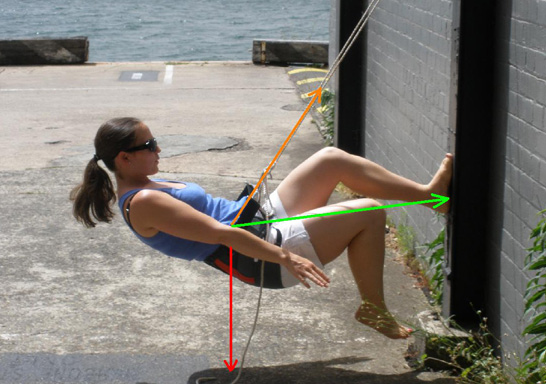
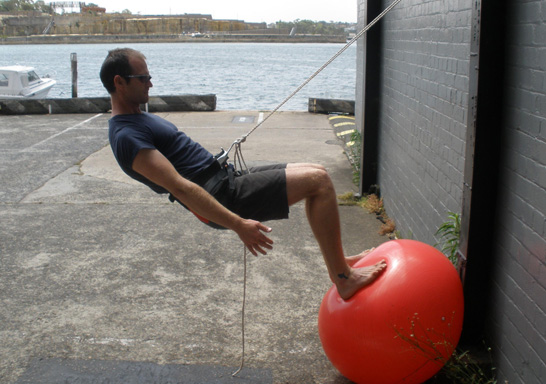
Different board shapes and fins will also help you train to balance against inertia. Looser boards like single and twin fins allow the force of inertia to affect your movement in turns much more than the thrusters. By experimenting with different shapes and fins, you’ll be better able to adjust or “feel” to how inertia affects your balance.
4. Base of Support The wider apart the feet are, the more balanced you are but the less freedom of movement you have, meaning the less maneuverable you are. Check out how close together MR’s feet are back in figure 4. The more balance training you do with your feet close together, the better your ability to surf with your feet closer together on the board.
The narrower the base of support, the harder it is to balance. Super narrow (width <18 inch) training boards are also a good way to train your balance. Many Olympic rowers will do their pre-race warm up with a rope hanging off the back of the boat dragging a wet towel behind them. They get rid of the towel just before the start of the race, and suddenly the boat feels super light and fast through the water. The same thing can be done with surfing. If you go for a session on a super narrow board which is hard to balance, you then jump on your normal board and suddenly it feels really stable and you feel more confident on the wave. This is more of a training tool for the competitive surfer or the junior’s with shapers helping them out. The more unstable the base of support, the harder it is to balance as well. Standing on a fit ball is a perfect example. Other good ways of training this area is in a pool, standing on anything you can find that floats. Even when you’re out the back waiting for the next set, see how long you can stand on your board in the one spot. Then see how close together you can get your feet on the board and still maintain balance. So, hopefully that’s explained a bit about balance and how to improve it. The laws of science, as boring as they are, can answer all questions in surfing, and once you have the answers you can use them to improve your surfing.
The laws of science, as boring as they are, can answer all questions in surfing, and once you have the answers you can improve your performance! …the only thing science can’t explain in surfing, the only thing that defies all laws of physics, is Tom Carroll’s snap on the vertical wall at the ’91 pipe masters!
A very big thank you to Dan Merkel for permission to use the awesome MR photo from Bustin’ Down the Door. Check out more of his photos at www.danmerkelmedia.com. If you have any questions, would like any further information about harness or slide mat exercises, or have any comments in agreement or disagreement with the content, email This e-mail address is being protected from spambots. You need JavaScript enabled to view it
About The Author: Scott has been surfing for over 20 years, and has over 10 years of experience in sports physiotherapy, working with numerous elite athletes in Australia from Olympic gold medalists to Rugby Union players. In 2008 he completed a post graduate scholarship at the Biomechanics Department of the Australian Institute of Sport, assisting in the preparation of the Australian Olympic team. Scott has recently become a partner at Ferry Rd Physio on the Gold Coast, and continues to work for the Australian Rowing team, the NSW Institute of Sport, and is a guest Lecturer at Bond University.

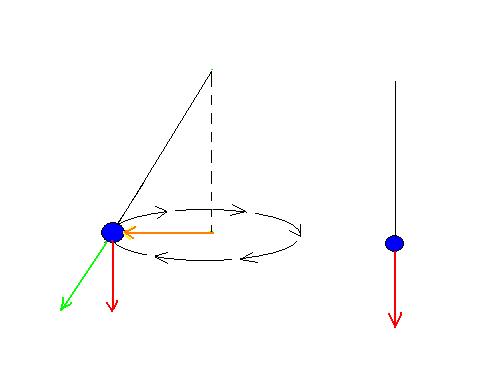
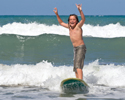
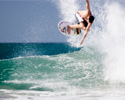
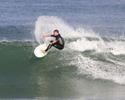


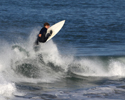
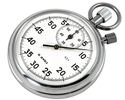
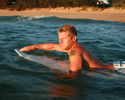
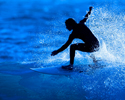
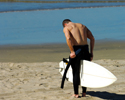
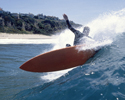
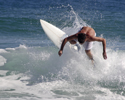
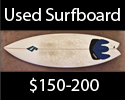

2 Comments